Tips to Get Kids to Eat Healthy Foods
Primal Edge Health participates in the Amazon Services LLC Associates Program and other affiliate programs and therefore, may collect a share of sales or other compensation from the links on this page. This comes at no additional cost to you, and all the prices and availability are accurate at the time of publishing.
There are few things more satisfying then watching our daughter enjoy nutrient dense foods and knowing that she is receiving the very best nutrient quality we can provide.
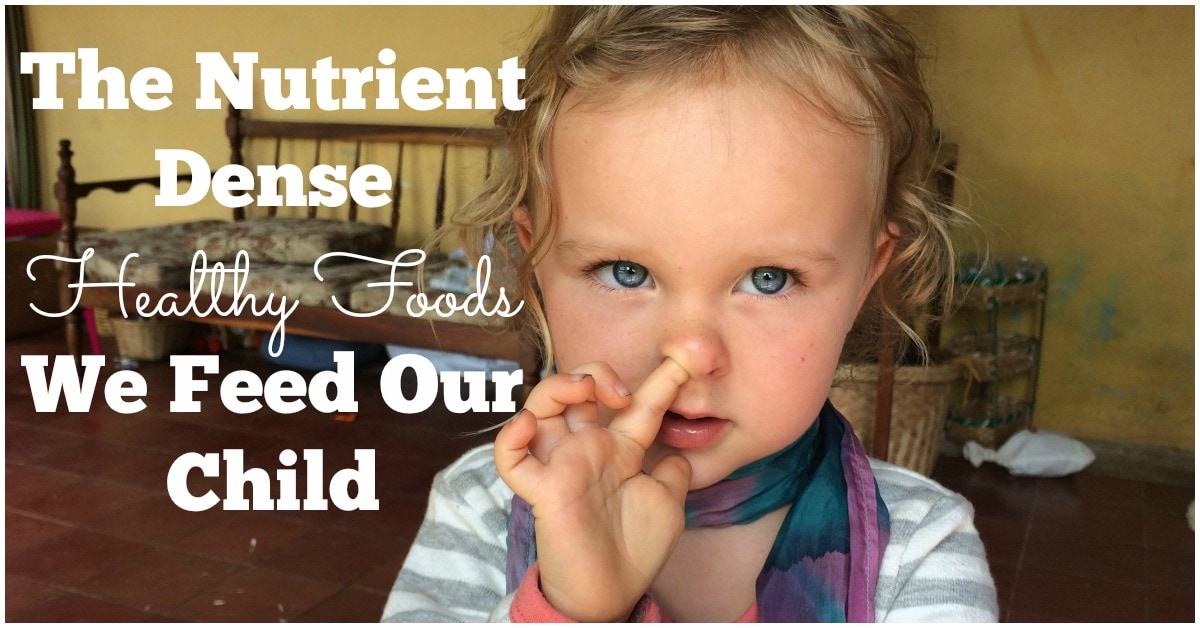
She never really eats any true “junk” foods, fast food or high fructose laden drinks and actually likes culturally shunned foods like sauerkraut and offal.
We of course, intend to keep it that way for as long as possible yet know that evidently, those foods will sneak their way into her mouth.
I hope that with these tips to get kids to eat healthy foods, she will have a solid foundation of healthy foods and understand what her body needs for nourishment.
If you aren’t already doing so, helping your child eat better is a worthy goal. Make a resolution and strategize for success.
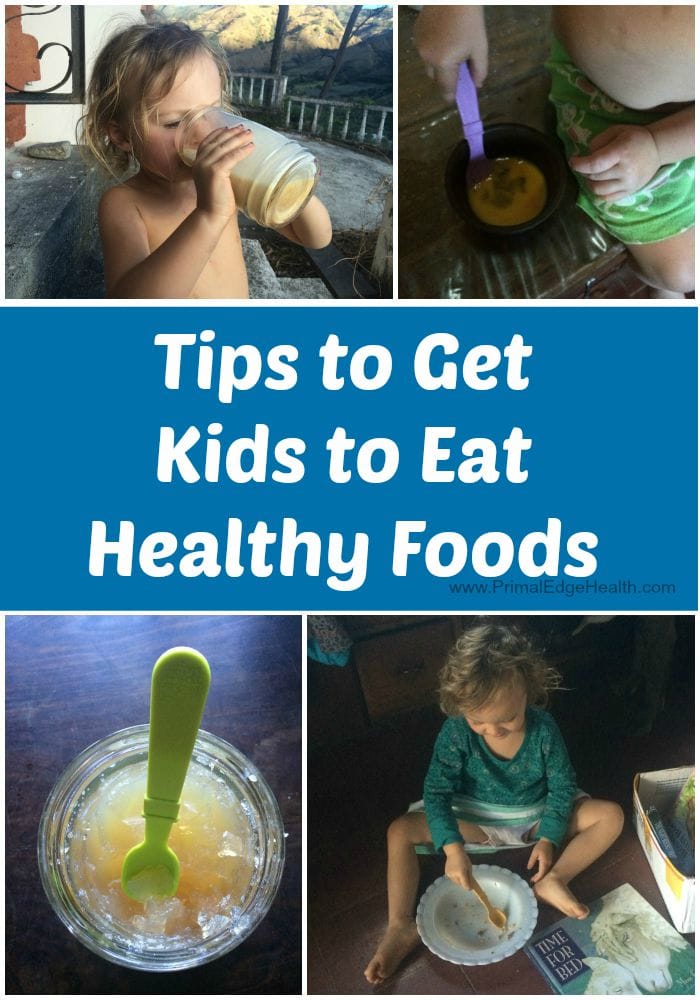
Table of Contents (click to view)
Teach kids healthy ways while they are young
First and foremost, identify if the child has any food allergies or sensitivities. Awareness around these issues is paramount.
It is our intention to teach her the importance of clean, organic, nutrient-dense foods. Essentially in a word, REAL food.
At only three years old, she understands where her food comes from whether it be from an animal, tree, bush, or out of the ground directly.
She seems to have a basic understanding of mortality. She understands young and old. She is familiar with the cycle of life as far as things are newly created and then decays, rot or decompose.
Paying outdoors, finding insects, watching food spoil, growing a garden, cutting fresh herbs, and having a compost pile have taught her these basic concepts.
She does not have qualms about eating animal products, there is no innate judgment or condemnation toward the idea. She wholeheartedly celebrates offal, dairy products, and eggs, knowing they will help her “grow so big as the roof” and “one day be big”.
She shops with us in the local stores and at the meat market. She has touched more animal parts than most adult Americans.
We often talk about respecting and appreciating our food and treat it as nutrition not entertainment.
We discuss the importance of stewardship over our environment and all living things around us.
Her life is intertwined with ours as we explore the health possibilities of certain dietary changes and challenge modern cultural norms of eating. We are learning and experiencing together as a family.
Our daughter has a solid foundation of healthy foods in her diet, that she genuinely enjoys. I have found four different techniques to employ when I want to sneak in extra nutrition into her foods.
Allow your child to help make their food
In addition to the techniques listed below, it is important to allow children to experiment with making and preparing food.
Set a welcoming environment for hands on exploration. This is a great opportunity to talk about where food comes from, how it affects the body and why certain foods are more important than others.
Free exploration with food and textures expresses the child’s will and is also a time of early learning and important fine motor development.
Simple keto kitchen essentials are all you need for cooking healthy family-friendly meals!
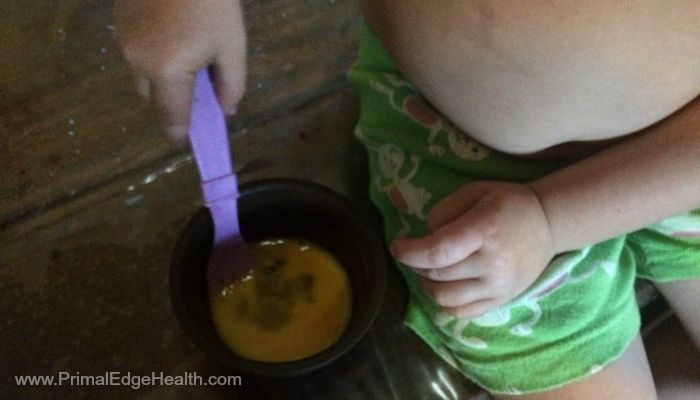
Ways kids can help prepare their food:
- cutting soft foods
- stirring in bowls or on the stove
- sprinkling spices, tasting different combinations
- measuring liquids and solids
- turning on and adding food to the blender/food processor
- picking out utensils, setting the table
The more children know about their food, the closer their relation to it and to their source of nourishment.
I’d also add shopping for local and seasonal foods is an educational experience in itself.

Four Ways to Sneak Healthy Foods onto a Kids Plate
Here are some ideas to get you started.
Blend it
It is easy to pack extra nutrition into smoothies, dips, and purees.
Invite your little one to try a Blueberry Avocado Smoothie or Keto Green Smoothie for breakfast or a snack.

Our daughter likes fresh fruit smoothies, especially during hot summer days. We use fresh, organic local fruit like berries and papayas in a dairy base of homemade raw milk yogurt, cream, or milk. Aryana’s favorite nutritional herb to add to smoothies is our adaptogenic maca powder.
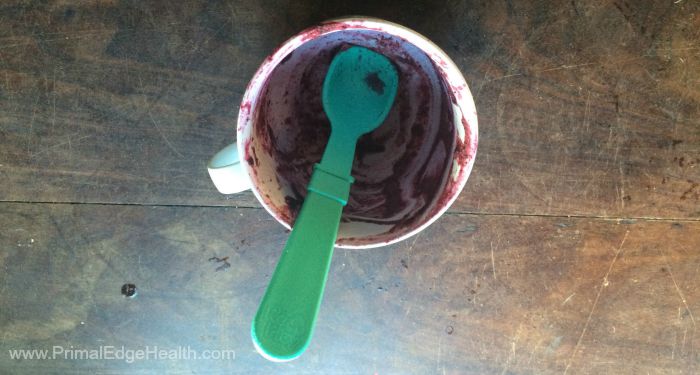
Dips and purees appeal to children’s inquisitive need to explore sensory textures. Guacamole and pestos are classic dips to enjoy. Dips are fun finger food opportunities, leave some veggies out and let them dip away. I make purees from broccoli, cauliflower, and squash and mix in cream, butter, and herbs.
Lately, I am gently food processing broccoli and mixing in herbs and butter. I pulse steamed broccoli a few times until it is crumbly, add in the butter and herbs, and chow down. Aryana goes for it!
Broccoli also hides well in this Savory Muffins Recipe.
Spread it
Spread a thick layer of guacamole, avocado, cream cheese, or butter onto flax crackers, veggie chips, and other kid-friendly foods.
These healthy fats are full of fat-soluble vitamins essential for healthy development. They also happen to make food taste extra good.
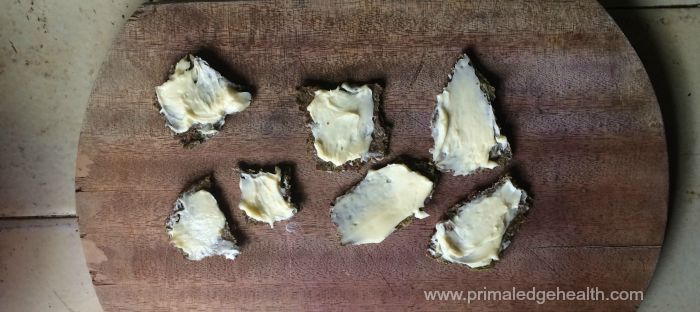
Aryana is a big fan of our homemade micronutrient flax crackers with a generous pat of butter spread across with just enough room for her fingers to hold on to.
Melt it
A little melted cheese goes a long way! This is how we first convinced our daughter to eat mackerel. Melted cheese goes well with anything, distracted with the gooey strands of goodness your kid happily munches on what you want them to eat. It is a win-win.
I apply liberal spoons of butter to her hot foods like steamed or roasted veggies, meats, and broths. Melted butter turns into juice and down it goes.
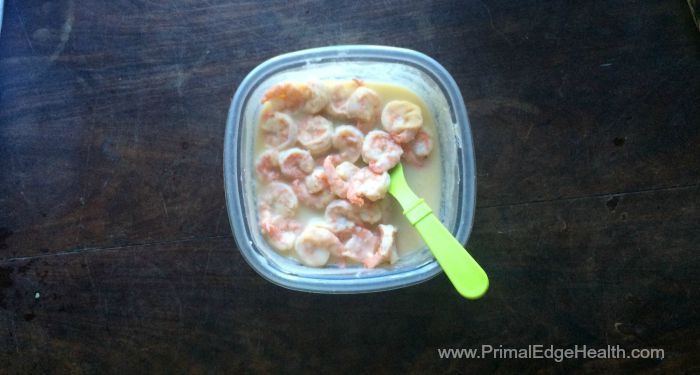
Negotiate it
Nothing like good old-fashioned bribing. If melted cheese fails the trick, I can usually announce a piece of cheese will grace Aryana’s plate after she has all of its current food in her belly. A simple “first let’s have this” or “just finish half of it” and “this will help you grow more than that” usually suffice as an encouragement to get my first choice food down to her belly.
Negotiating food has its merits but I am careful to not get carried away or overly forceful. If she is truly full of that food or really really does not want anymore I do my best to respect her boundaries and trust that her body will guide her to the foods it needs.
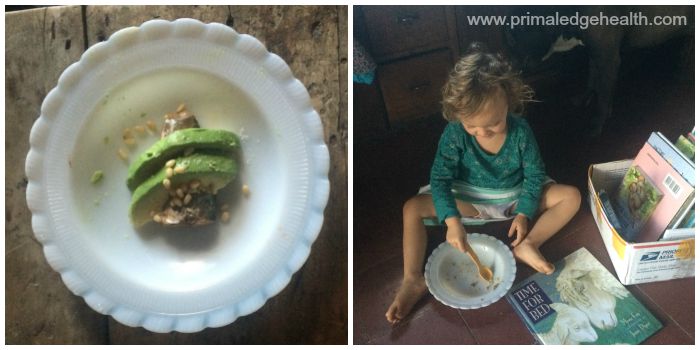
Pine nuts are a rare and special treat we keep tucked away in our fridge. I use them in special times of added nutrient need. For example, “I’ll trade you a bite of this for a pine nut” or simply add a sprinkling of pine nuts over the food and mix it in.
Here is the last of my tips to get kids to eat healthy foods.
Excite it
Excite the tongue. New flavors and textures can entice a young mouth to finish off the plate.
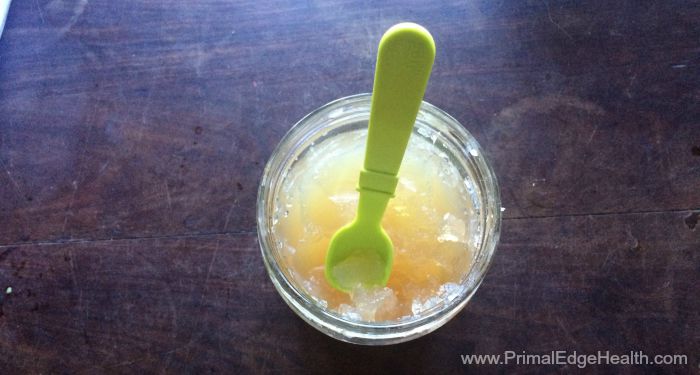
Generally, I try one or two new spices at a time to gauge Aryana’s reaction and not overwhelm her palate. She consistently enjoys fermented foods so we share sauerkrauts, lacto-fermented veggie sticks, and probiotic teas together.
We add a lot of anti-inflammatory spices to our food. Dulse is another fun flavor I add into her food every now and then. It is a seaweed that adds a funky salty touch to the food. If a dish comes out too bitter I use mesquite or lucuma to sweeten it up a bit.
Change takes time, so be patient with yourself and always pursue self-awareness as you go forward!




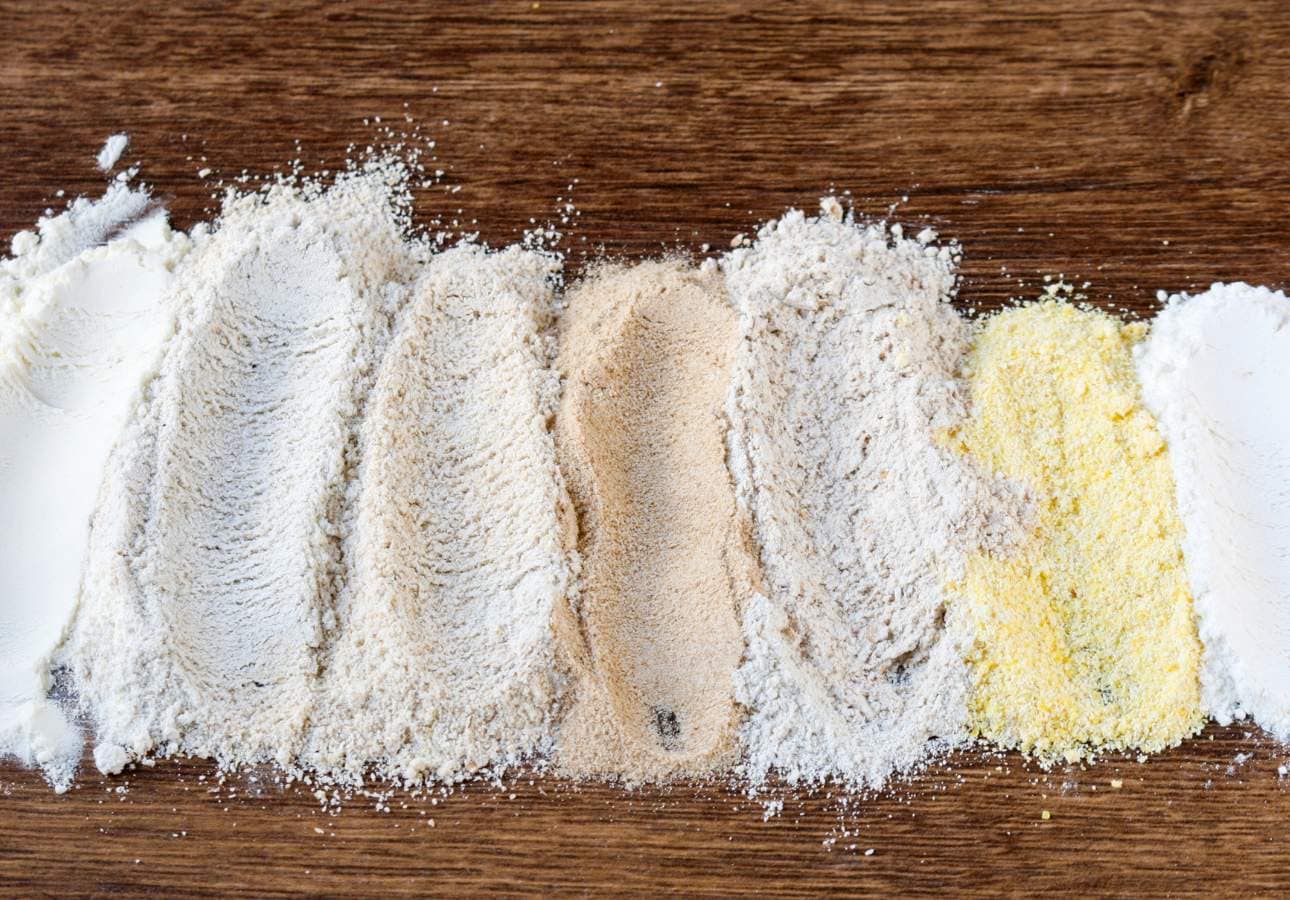
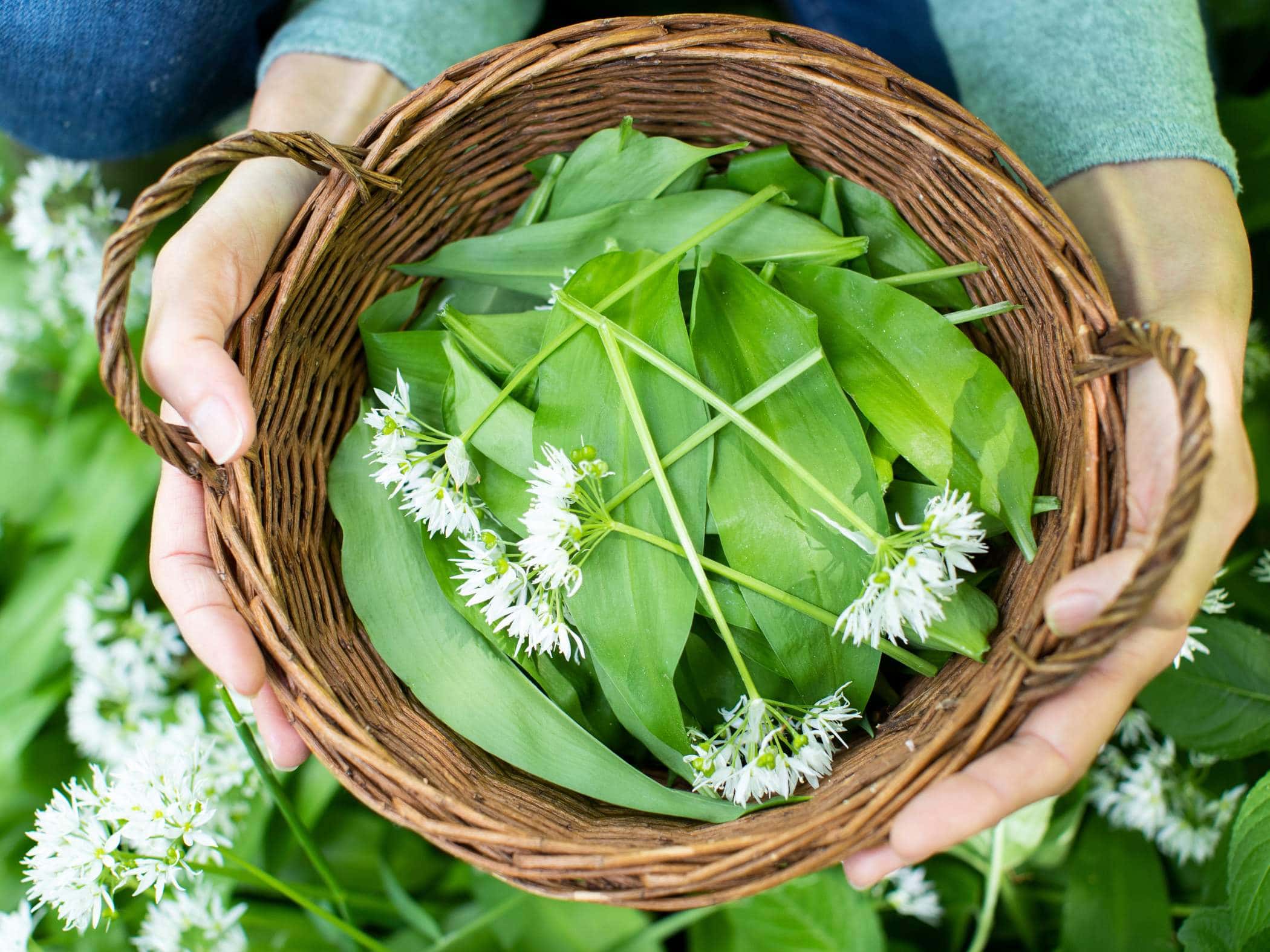
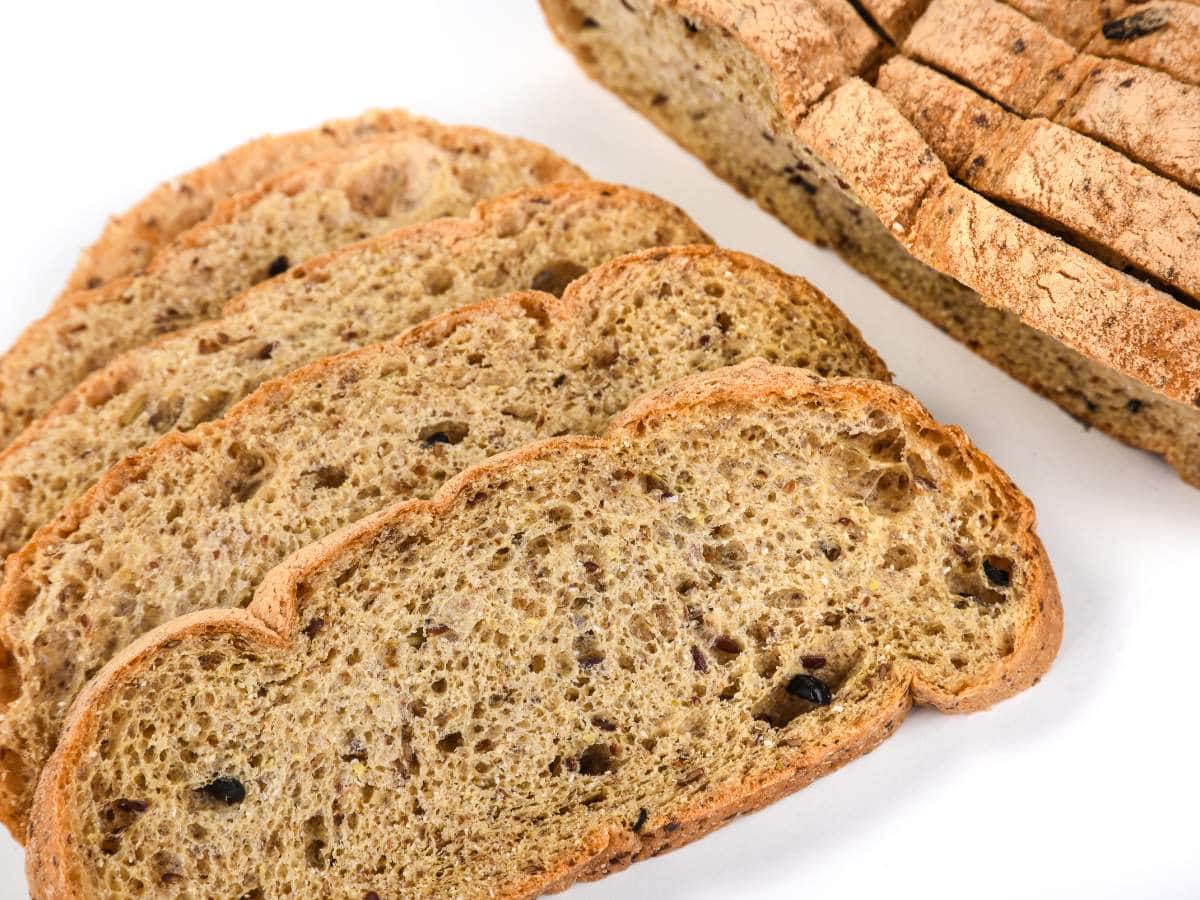
We lived in rural western NC for about 7 years on our little homestead. Despite being homebirthed, unvaxxed, and nursed till 3, our oldest had major food sensitivities. I had healed my MS with food so of course I dug until I found GAPS and Weston Price. We set up our farm little by little. We raised everything we ate and bartered the rest. I am proud to say my girls (all three of them) have been raised on raw milk, fresh eggs, homemade everything. They love liver pate and saurkraut. I mix ground heart into meatloaf, meatballs, or tacos. The girls have helped their Dad pluck and clean plenty of chickens and they respect their food. When we venture out into the world we always have our eyes open for what God has provided whether that be elderberries, grapes, you name it. I think the only thing that holds most children back from exploring their palates is their parents own preconceived dislikes. You guys are doing great things. Can I ask why you chose your location?
Thanks for these tips, Jess. I read all your posts and truly enjoy the family-oriented topics the most. I try my best to incorporate a range of healthy, wholesome foods for my 15 month old to have. I cannot agree with you more on trusting our child to know when they have had enough of something. This doesn’t become so much of a dilemma when all options offered are nothing but healthy and nutritious.
I recently purchased some maca powder for mood support and am curious as to how much of it is ok for a baby to take? I would’ve loved to have purchased from your site together with the Reishi Oil but you don’t ship to Australia. I hope you can do worldwide shipping sooner than later and I’ll be first to put in an order.
Once again, thank you for sharing your wealth of knowledge here and on youtube. I’m an avid fan.
Hi Deb! It is fine for a baby to take maca powder, add it to a smoothie, water or juice. Perhaps start with an 1/8th of a teaspoon and increase as you feel necessary. For a 15 month old, it is likely to already have very strong systems in place. Unless there is a real reason you feel your baby can benefit from the maca, I would wait until it is older. We will be sure to make an announcement when we have the opportunity to send internationally. Thanks for all the positive feedback! Keep strong mama!